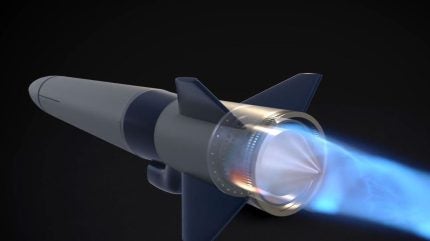
Pratt & Whitney, a business unit of RTX, has concluded a series of tests on its new rotating detonation engine (RDE), conducted in collaboration with the RTX Technology Research Center (RTRC).
After a decade of design and testing at RTRC, Pratt & Whitney received a contract from the US Air Force Research Laboratory to collaborate with RTRC and Raytheon on developing a RDE for effectors.
The contract resulted in the latest development and performance testing.
The RTRC conducted the early-stage work and later collaborated with Pratt & Whitney, an original engine manufacturer, to refine the system.
This collaboration aims to develop a system capable of powering a new generation of effectors, including missiles designed and developed by Raytheon.
Rotating detonation engines employ a thermodynamic cycle and eliminate the need for moving parts.
This results in superior thermal efficiency and performance, yielding a compact, cost-efficient engine design, the company notes.
The reduced size of the RDE offers space for additional fuel, sensors, and payload, potentially extending the range of vehicles crucial for future defence applications.
Pratt & Whitney GATORWORKS senior director Chris Hugill said: “Our testing simulated aggressive assumptions for how and where the rotating detonation engine needs to perform.
“This testing validated key elements of Pratt & Whitney’s design approach and provides substantiation to continue RTX vehicle and propulsion integration to accelerate future capabilities for our customers.”
The outcomes of these tests have led to increased internal funding as the company collaborates with the US Department of Defense to expedite the integration of the engine into ground tests for vehicles in the upcoming years.
This development follows Pratt & Whitney’s recent contract award valued at up to $1.5bn.
The contract involves maintaining the F119 engines that power the US Air Force’s F-22 Raptor fighter jets.



